STMIPID02 vs Competitors: The Clear Choice
ST MICRO DESERIALIZER FOR CAMERA
STMIPID02 outperforms competitors with dual MIPI CSI-2 and SMIA CCP2 support, high-speed data rates, power efficiency, and seamless integration for imaging systems.
Product Introduction

STMIPID02 delivers unmatched performance for MIPI CSI-2 and SMIA CCP2 buses. You can rely on its dual camera functionality to handle mobile applications with ease. Its dual lane receiver connects seamlessly to high-resolution cameras, ensuring smooth data transmission even at high frame rates. The device’s 12-bit parallel output interface processes pixel data at speeds of up to 200 MHz, making it ideal for demanding imaging tasks. With STMIPID02, you gain access to advanced deserialization technology that simplifies complex operations while maintaining exceptional reliability.
STMIPID02 Performance Comparison

High-Speed Data Transmission
When working with high-resolution imaging systems, you need a deserializer that can handle large amounts of data without delays. STMIPID02 excels in this area by supporting data rates of up to 1.5 Gbps per lane. This capability ensures smooth and uninterrupted data flow, even when dealing with demanding applications like 4K video streaming or multi-camera setups.
The device’s 12-bit parallel output interface processes pixel data at speeds of up to 200 MHz. This means you can rely on STMIPID02 to deliver high-speed data transmission without compromising image quality. Whether you're designing automotive vision systems or consumer electronics, this performance ensures your projects meet modern demands.
Tip: High-speed data transmission is critical for applications requiring real-time processing, such as autonomous vehicles and medical imaging. STMIPID02 ensures you stay ahead in these fields.
Reliability Under High-Load Conditions
In high-load scenarios, maintaining consistent performance is crucial. STMIPID02 is designed to operate reliably under such conditions. Its robust architecture minimizes data loss and ensures stable operation, even when handling multiple data streams simultaneously.
You can trust STMIPID02 to maintain its performance during extended use. Its advanced error correction mechanisms detect and correct transmission errors in real time. This feature reduces the risk of corrupted data, giving you confidence in the accuracy of your system's output.
For engineers working on mission-critical applications, reliability is non-negotiable. STMIPID02 provides the stability you need to meet stringent performance requirements.
Power Efficiency and Thermal Optimization
Power efficiency plays a significant role in modern electronic systems. STMIPID02 is engineered to consume minimal power while delivering maximum performance. This efficiency not only reduces energy costs but also extends the lifespan of your devices.
Thermal optimization is another standout feature of STMIPID02. The device generates less heat during operation, which minimizes the need for additional cooling solutions. This design choice simplifies system integration and reduces overall costs.
Note: Efficient power usage and thermal management are essential for portable devices and embedded systems. STMIPID02 ensures your designs remain compact and cost-effective.
STMIPID02 Compatibility
Dual Support for MIPI CSI-2 and SMIA CCP2
STMIPID02 stands out with its ability to support both MIPI CSI-2 and SMIA CCP2 interfaces, making it a versatile choice for modern imaging systems. This dual compatibility allows you to work with a wide range of camera modules and imaging formats, ensuring flexibility in your designs. Whether you're handling high-resolution video streams or legacy imaging systems, STMIPID02 adapts seamlessly to your needs.
Here’s a breakdown of its technical benchmarks:
| Feature | Description |
|---|---|
| Camera Interface | Two-camera interface support |
| Main Camera Receiver | 1.6 Gbps dual data lane receiver with selectable 1/2 lane operation |
| Second Camera Receiver | 800 Mbps single data lane receiver |
| MIPI D-PHY Clock Lane | 400 MHz DDR clock lane |
| D-PHY Mode | Pass-through mode |
| D-PHY Revision | Selectable 0.81 or 0.9 |
| SMIA CCP2 Receivers | 650 Mbps class 2 receivers with selectable data/clock and data/strobe operation |
| Supported Formats | MIPI CSI-2 and SMIA CCP2 RAW6, RAW7, RAW8, RAW10, RAW12, YUV, RGB, JPEG |
| Output Interface | 12-bit parallel output at 200 MHz |
| Output Signals | HSYNC, VSYNC, continuous PCLK qualification signal |
| Dual Camera Support | Tristate-able output for dual camera systems |
This level of support ensures you can integrate STMIPID02 into both cutting-edge and legacy systems without compatibility concerns.
Tip: If your project involves transitioning between MIPI CSI-2 and SMIA CCP2, STMIPID02 simplifies the process by offering seamless dual support.
Seamless Integration Across Applications
STMIPID02 is designed to integrate effortlessly into a variety of applications. Its flexible architecture and robust interface options make it suitable for automotive, consumer electronics, and industrial imaging systems. You can rely on its dual-lane receiver to handle high-resolution cameras, while its single-lane receiver supports secondary imaging devices.
The device’s output interface, capable of delivering de-serialized pixel data at rates up to 200 MHz, ensures smooth operation across diverse use cases. Additionally, its compatibility with multiple data formats—such as RAW, YUV, RGB, and JPEG—means you can deploy it in projects requiring different imaging standards.
Note: STMIPID02’s seamless integration capabilities reduce development time, allowing you to focus on optimizing your application’s performance.
Broad Device Interoperability
Interoperability is a key strength of STMIPID02. Its design ensures compatibility with a wide range of devices, from high-frame-rate cameras to legacy imaging systems. The device’s SMIA CCP2 receivers share input balls with MIPI CSI-2 receivers, enabling you to switch between interfaces without hardware modifications.
Here’s a quick look at its interoperability features:
| Feature | Description |
|---|---|
| Camera Interface | Two-camera interface support |
| Main Camera Receiver | Dual lane receiver for high resolution/high frame rate cameras |
| SMIA Compatibility | Receivers share input balls with MIPI CSI-2 receivers |
| Output Rate | Capable of outputting de-serialized pixel data at rates up to 200 MHz |
This broad compatibility ensures STMIPID02 can work with a variety of imaging devices, making it an ideal choice for engineers and developers seeking a reliable deserialization solution.
Callout: Broad device interoperability means fewer compatibility issues, saving you time and resources during system integration.
Features of STMIPID02
Dual Input Channel Capability
STMIPID02 offers dual input channel capability, allowing you to connect two cameras simultaneously. This feature is ideal for applications requiring multi-camera setups, such as automotive vision systems or industrial imaging solutions. Each channel operates independently, ensuring smooth data transmission without interference.
The dual input design enhances flexibility in your projects. You can use one channel for high-resolution imaging and the other for secondary tasks like depth sensing or motion detection. This capability simplifies system architecture and reduces the need for additional hardware.
Tip: Dual input channels are perfect for applications where space and cost constraints demand efficient multi-camera integration.
Advanced Error Correction Mechanisms
STMIPID02 incorporates advanced error correction mechanisms to ensure data integrity. These mechanisms detect and correct transmission errors in real time, minimizing the risk of corrupted data. You can rely on this feature to maintain high-quality output, even in challenging environments.
Error correction plays a critical role in applications like medical imaging and autonomous vehicles, where accuracy is paramount. STMIPID02’s robust architecture ensures your system delivers reliable performance under demanding conditions.
Callout: Real-time error correction reduces troubleshooting time, allowing you to focus on optimizing your application.
Simplified Configuration and Setup
STMIPID02 simplifies configuration and setup, making it easy for you to integrate into your projects. Its intuitive interface and clear documentation reduce the learning curve, enabling faster deployment. You can quickly configure the device to match your specific requirements, saving valuable development time.
The streamlined setup process ensures compatibility with various imaging formats and systems. Whether you’re working on consumer electronics or industrial applications, STMIPID02 adapts to your needs with minimal effort.
Note: Simplified setup means you spend less time on configuration and more time on innovation.
STMIPID02 Cost-Effectiveness
Competitive Pricing
STMIPID02 offers competitive pricing that makes it accessible for projects with tight budgets. You don’t need to compromise on quality or performance to stay within your financial limits. Its cost aligns well with its advanced features, giving you a high-performing deserializer at a reasonable price point.
When comparing STMIPID02 to competitors, you’ll notice its pricing reflects a balance between affordability and functionality. This makes it an excellent choice for engineers and developers who want to maximize their resources without sacrificing reliability.
Tip: Competitive pricing doesn’t mean cutting corners. STMIPID02 delivers premium performance at a cost-effective rate.
Long-Term Value and Return on Investment
Investing in STMIPID02 ensures long-term value for your projects. Its robust design and advanced features reduce the need for frequent upgrades, saving you money over time. You can rely on its dual input channel capability and error correction mechanisms to maintain consistent performance across various applications.
The device’s versatility also contributes to its return on investment. Whether you’re working on automotive vision systems or consumer electronics, STMIPID02 adapts to your needs, minimizing the risk of obsolescence. This adaptability ensures your investment remains relevant as technology evolves.
Callout: Long-term value means fewer replacements and upgrades, helping you optimize your budget.
Reduced Maintenance and Support Costs
STMIPID02 simplifies maintenance with its reliable architecture and error correction features. You won’t need to spend excessive time troubleshooting or replacing components. Its thermal optimization reduces wear and tear, extending the lifespan of your devices and lowering maintenance costs.
Support costs also decrease with STMIPID02. Its seamless integration and simplified setup process reduce the need for extensive technical assistance. You can focus on innovation instead of worrying about ongoing support expenses.
Note: Reduced maintenance and support costs free up resources for other critical aspects of your project.
STMIPID02 Use Cases

Automotive Vision Systems
You can rely on STMIPID02 to enhance automotive vision systems. Its dual input channel capability allows you to connect multiple cameras, making it ideal for advanced driver-assistance systems (ADAS). These systems require high-resolution imaging to detect objects, monitor lanes, and improve safety. STMIPID02 ensures smooth data transmission, even in high-load conditions, so your system can process real-time video feeds without delays.
Thermal optimization also plays a critical role in automotive applications. STMIPID02 generates less heat, which reduces the need for additional cooling components. This feature helps you design compact and efficient systems for vehicles.
Tip: Use STMIPID02 to simplify the integration of multi-camera setups in ADAS, ensuring reliable performance under demanding conditions.
Consumer Electronics Applications
STMIPID02 adapts seamlessly to consumer electronics, such as smartphones, tablets, and smart home devices. Its compatibility with MIPI CSI-2 and SMIA CCP2 interfaces allows you to integrate it with a wide range of camera modules. Whether you’re working on high-resolution photography or video streaming, STMIPID02 delivers exceptional image quality.
The device’s power efficiency is especially beneficial for portable electronics. It consumes minimal energy, extending battery life and improving user satisfaction. You can also take advantage of its simplified configuration to reduce development time and bring products to market faster.
Callout: STMIPID02 is perfect for consumer devices where energy efficiency and high-quality imaging are top priorities.
Industrial and Medical Imaging Solutions
In industrial and medical imaging, precision and reliability are essential. STMIPID02 supports high-speed data transmission, making it suitable for applications like factory automation, quality control, and diagnostic imaging. Its advanced error correction mechanisms ensure data integrity, which is critical for accurate results.
You can use STMIPID02 to handle complex imaging tasks, such as capturing high-resolution images in low-light environments. Its broad compatibility with imaging formats like RAW and YUV allows you to tailor it to specific industry needs.
Note: STMIPID02’s robust design ensures consistent performance, even in challenging industrial or medical environments.
STMIPID02 combines exceptional performance, broad compatibility, and advanced features, making it the ideal choice for deserialization applications. Its support for MIPI CSI-2 and SMIA CCP2 interfaces ensures seamless integration across diverse systems. You can rely on its robust design to handle demanding tasks while maintaining efficiency and reliability.
Here’s a quick overview of its standout features:
| Feature | Description |
|---|---|
| Camera Support | MIPI CSI-2 for main camera, SMIA CCP2 for secondary camera |
| Data Formats | Supports Raw Bayer, YUV, RGB, and JPEG formats |
| Decompression Options | Various DPCM/PCM decompression options available |
| Package Type | VFBGA-49, suitable for compact designs |
| Compliance | Lead-free and RoHS compliant for environmental sustainability |
Whether you’re working on automotive vision systems, consumer electronics, or industrial imaging, STMIPID02 delivers reliable and versatile deserialization. Its cost-effectiveness and long-term value make it a smart investment for engineers and developers like you.
Callout: STMIPID02 ensures your projects stay ahead of the curve with its cutting-edge technology and adaptability.
FAQ
What makes STMIPID02 better than its competitors?
STMIPID02 excels in performance, compatibility, and cost-effectiveness. It supports dual input channels, advanced error correction, and seamless integration across applications. Its power efficiency and thermal optimization reduce costs while ensuring reliability. You get a versatile solution for modern imaging systems.
Tip: STMIPID02’s dual support for MIPI CSI-2 and SMIA CCP2 interfaces sets it apart from competitors.
Can STMIPID02 handle high-resolution cameras?
Yes, STMIPID02 supports high-resolution cameras with data rates up to 1.5 Gbps per lane. Its dual-lane receiver ensures smooth data transmission for demanding applications like 4K video streaming or multi-camera setups.
Callout: High-speed data transmission ensures real-time processing for applications like autonomous vehicles and medical imaging.
Is STMIPID02 suitable for portable devices?
Absolutely! STMIPID02’s power efficiency minimizes energy consumption, making it ideal for portable devices like smartphones and tablets. Its thermal optimization reduces heat generation, extending battery life and device longevity.
Note: Compact designs benefit from STMIPID02’s efficient power usage and reduced cooling requirements.
How easy is it to integrate STMIPID02 into projects?
STMIPID02 simplifies integration with its intuitive interface and clear documentation. You can configure it quickly to match your requirements. Its compatibility with multiple imaging formats ensures seamless deployment across diverse applications.
Tip: Faster setup means you spend less time on configuration and more time on innovation.
Does STMIPID02 support legacy systems?
Yes, STMIPID02 supports SMIA CCP2 interfaces, ensuring compatibility with legacy imaging systems. Its shared input balls allow switching between MIPI CSI-2 and SMIA CCP2 without hardware modifications.
Callout: Broad compatibility makes STMIPID02 a reliable choice for transitioning between modern and legacy systems.
Datasheet PDF
- Datasheets :
![C106D Thyristor: Circuits, Pinout, and Datasheet [Video]](https://res.utmel.com/Images/Article/d67d29cd-e061-4abc-832a-4d1631d57c61.png) C106D Thyristor: Circuits, Pinout, and Datasheet [Video]
C106D Thyristor: Circuits, Pinout, and Datasheet [Video]11 January 202218803
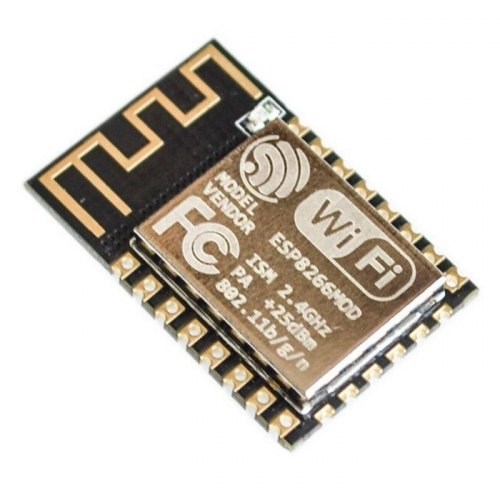 ESP12F: Ai-Thinker, Arduino, Pinout and Datasheet
ESP12F: Ai-Thinker, Arduino, Pinout and Datasheet09 March 20225630
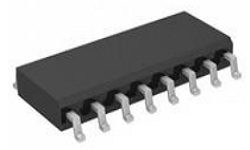 SG3525AP IC: Schematic, Applications and Datasheet
SG3525AP IC: Schematic, Applications and Datasheet03 November 20231780
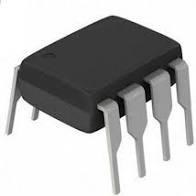 MC1458N Operational Amplifier: Pinout, Specification, and Datasheet
MC1458N Operational Amplifier: Pinout, Specification, and Datasheet30 June 20213198
 STM32F723E-DISCO Communities and Development Resources Guide
STM32F723E-DISCO Communities and Development Resources Guide07 June 2025114
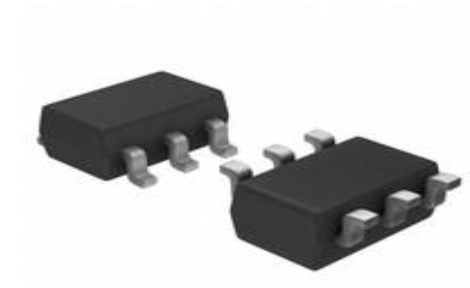 REG710NA-3/250: Pinout, Converter, Datasheet
REG710NA-3/250: Pinout, Converter, Datasheet18 February 2022677
![2SJ162 P-Channel MOSFET: 2SJ162 MOSFET, Price, Datasheet [Video]](https://res.utmel.com/Images/Article/c8a7270e-ffc2-4eee-a95c-2e9f4aa56388.jpg) 2SJ162 P-Channel MOSFET: 2SJ162 MOSFET, Price, Datasheet [Video]
2SJ162 P-Channel MOSFET: 2SJ162 MOSFET, Price, Datasheet [Video]24 December 20213339
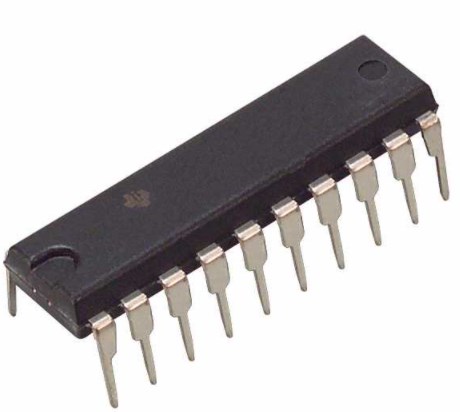 74LS245: Transistor, Pinout, Datasheet
74LS245: Transistor, Pinout, Datasheet22 March 20224057
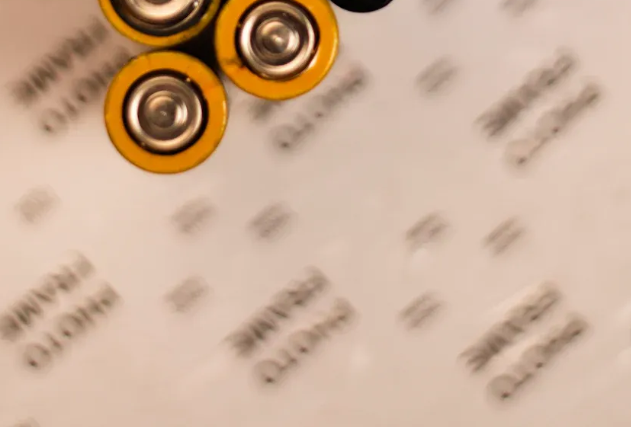 Top-Rated AG13 Battery Equivalent Substitutes
Top-Rated AG13 Battery Equivalent Substitutes22 August 2025710
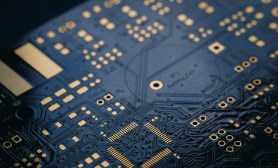 How to treat 5G?
How to treat 5G?23 October 20212031
 Introduction to MD8002A Audio Amplifier
Introduction to MD8002A Audio Amplifier27 March 20256499
 Will MicroLED replace LCD and OLED?
Will MicroLED replace LCD and OLED?31 August 20213048
 Review of IoT-Based Smart Home Security Systems- Part 1
Review of IoT-Based Smart Home Security Systems- Part 128 March 20243445
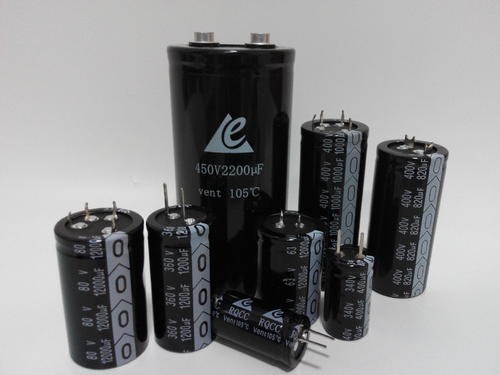 Aluminum Electrolytic Capacitor: Structure and Features
Aluminum Electrolytic Capacitor: Structure and Features19 December 20203771
 How does the CPU recognize the Code?
How does the CPU recognize the Code?08 August 20221075
 How to Address IoT Eco-security in the Era of Digital Transformation?
How to Address IoT Eco-security in the Era of Digital Transformation?22 April 2022493
STMicroelectronics
In Stock: 20
United States
China
Canada
Japan
Russia
Germany
United Kingdom
Singapore
Italy
Hong Kong(China)
Taiwan(China)
France
Korea
Mexico
Netherlands
Malaysia
Austria
Spain
Switzerland
Poland
Thailand
Vietnam
India
United Arab Emirates
Afghanistan
Åland Islands
Albania
Algeria
American Samoa
Andorra
Angola
Anguilla
Antigua & Barbuda
Argentina
Armenia
Aruba
Australia
Azerbaijan
Bahamas
Bahrain
Bangladesh
Barbados
Belarus
Belgium
Belize
Benin
Bermuda
Bhutan
Bolivia
Bonaire, Sint Eustatius and Saba
Bosnia & Herzegovina
Botswana
Brazil
British Indian Ocean Territory
British Virgin Islands
Brunei
Bulgaria
Burkina Faso
Burundi
Cabo Verde
Cambodia
Cameroon
Cayman Islands
Central African Republic
Chad
Chile
Christmas Island
Cocos (Keeling) Islands
Colombia
Comoros
Congo
Congo (DRC)
Cook Islands
Costa Rica
Côte d’Ivoire
Croatia
Cuba
Curaçao
Cyprus
Czechia
Denmark
Djibouti
Dominica
Dominican Republic
Ecuador
Egypt
El Salvador
Equatorial Guinea
Eritrea
Estonia
Eswatini
Ethiopia
Falkland Islands
Faroe Islands
Fiji
Finland
French Guiana
French Polynesia
Gabon
Gambia
Georgia
Ghana
Gibraltar
Greece
Greenland
Grenada
Guadeloupe
Guam
Guatemala
Guernsey
Guinea
Guinea-Bissau
Guyana
Haiti
Honduras
Hungary
Iceland
Indonesia
Iran
Iraq
Ireland
Isle of Man
Israel
Jamaica
Jersey
Jordan
Kazakhstan
Kenya
Kiribati
Kosovo
Kuwait
Kyrgyzstan
Laos
Latvia
Lebanon
Lesotho
Liberia
Libya
Liechtenstein
Lithuania
Luxembourg
Macao(China)
Madagascar
Malawi
Maldives
Mali
Malta
Marshall Islands
Martinique
Mauritania
Mauritius
Mayotte
Micronesia
Moldova
Monaco
Mongolia
Montenegro
Montserrat
Morocco
Mozambique
Myanmar
Namibia
Nauru
Nepal
New Caledonia
New Zealand
Nicaragua
Niger
Nigeria
Niue
Norfolk Island
North Korea
North Macedonia
Northern Mariana Islands
Norway
Oman
Pakistan
Palau
Palestinian Authority
Panama
Papua New Guinea
Paraguay
Peru
Philippines
Pitcairn Islands
Portugal
Puerto Rico
Qatar
Réunion
Romania
Rwanda
Samoa
San Marino
São Tomé & Príncipe
Saudi Arabia
Senegal
Serbia
Seychelles
Sierra Leone
Sint Maarten
Slovakia
Slovenia
Solomon Islands
Somalia
South Africa
South Sudan
Sri Lanka
St Helena, Ascension, Tristan da Cunha
St. Barthélemy
St. Kitts & Nevis
St. Lucia
St. Martin
St. Pierre & Miquelon
St. Vincent & Grenadines
Sudan
Suriname
Svalbard & Jan Mayen
Sweden
Syria
Tajikistan
Tanzania
Timor-Leste
Togo
Tokelau
Tonga
Trinidad & Tobago
Tunisia
Turkey
Turkmenistan
Turks & Caicos Islands
Tuvalu
U.S. Outlying Islands
U.S. Virgin Islands
Uganda
Ukraine
Uruguay
Uzbekistan
Vanuatu
Vatican City
Venezuela
Wallis & Futuna
Yemen
Zambia
Zimbabwe











